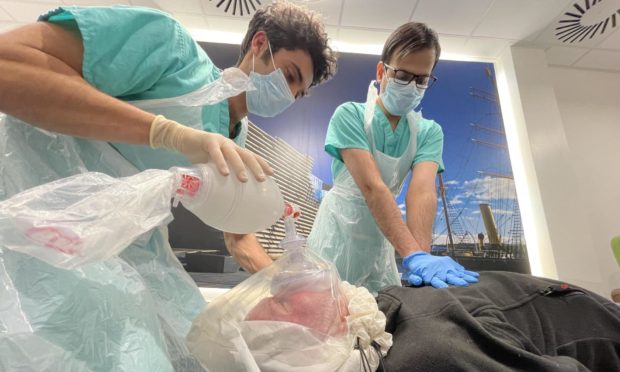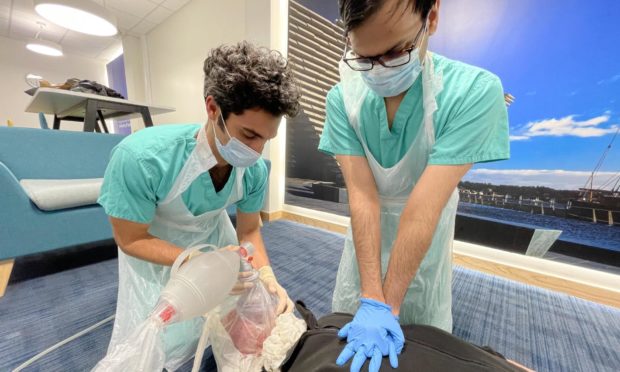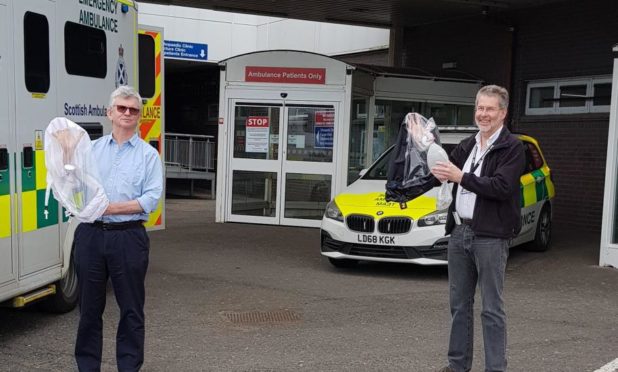Potentially life-saving resuscitation equipment to protect first responders from Covid-19 has been launched in Tayside.
At the start of the pandemic, Professor Peter Stonebridge feared that saliva droplets containing coronavirus may be released when healthcare teams or first responders carried out CPR.
The medical director at NHS Tayside developed a form of personal protective equipment (PPE) that could be placed on the patient — the Sarus-CPR Hood.
Professor Stonebridge also recognised while resuscitating a hospital patient, when speed is crucial, putting on PPE correctly may not always happen or cause delays to treatment.
How does it work?
While the contagious nature of coronavirus inspired the idea, it is thought the device will also be useful after the current pandemic and provide protection from a range of viruses.
The hood has been designed to allow trained CPR responders to fit it on a collapsed patient as soon as they arrive on the scene.
A model prototype was sent to Scottish Health Innovations (Shil) and performance manufacture Keela Outdoors, who brought the Sarus-CPR to life.
It is made from transparent fabric which creates a barrier between the patient and the individual performing resuscitation and reduces the risk of contamination from bacteria and viruses.
Professor Stonebridge said: “Frontline healthcare workers and care givers have been absolutely vital to our response to the pandemic and out of all of the challenges of managing the spikes of Covid-19, there has been a lot of innovation in healthcare.
“Thanks to the input of other experts in manufacturing and design, the kernel of an idea has been developed into the Sarus-CPR hood and I am very grateful to all the collaborators on this project.”
Rod Mountain, an ear, nose and throat surgeon at NHS Tayside, worked with Shil and Keela Outdoors to flesh out the idea.
He said: “I am immensely proud to have been part of its development.
“Covid-19 drove the innovation, prompting us to look at different approaches to PPE, but we now believe its applications go well beyond the current pandemic.”


